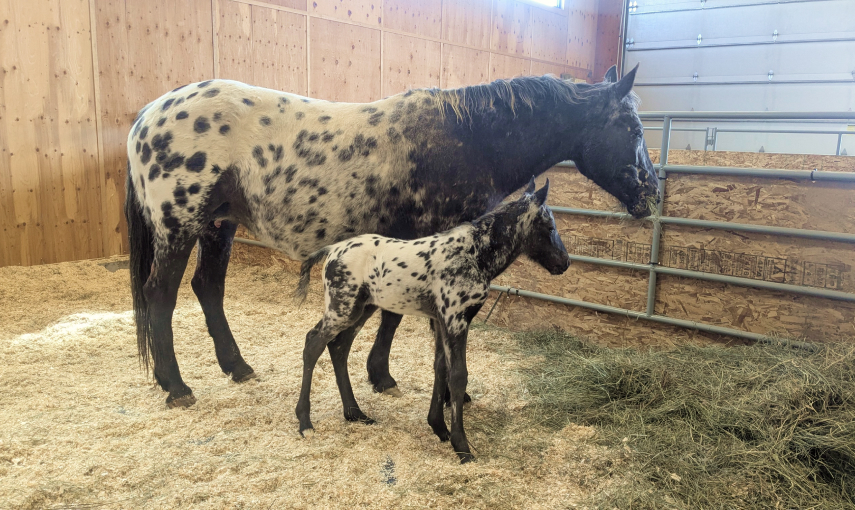
On March 11th, 2025, a foal was born at Jackson Fork Ranch. This foal looks a bit different than the Appaloosa foals born a few months prior. This foal is half Percheron and half Appaloosa.
Deadshot Breeding Operations breeds 100% Percheron foals to support and supplement Ross Honsberger and the JFR Hitch. The foals stay here on the ranch until they’re two years old — at which point Ross decides if they make the cut for the hitch or if we will sell them.
The owner of Jackson Fork Ranch, entrepreneur and philanthropist Joe Ricketts, saw a need to create a larger-boned riding horse that would be capable of carrying a larger rider. Completing his vision, Mr. Ricketts desired black-and-white spotted coat — part of the range of Appaloosa coats known as the Leopard Complex.
As for the operation, we were interested in pairing the majestic qualities of the Percheron with the vibrant personality and longevity of the Appaloosa.

In 2013, following nearly a decade’s worth of research, an organization called The Appaloosa Project was able to isolate and create a DNA test for the LP gene mutation responsible for unlocking the full suite of coat patterns within the Leopard Complex gene.
To get this beautiful foal, we bred 100% Percheron mares to an Appaloosa stallion. We knew, through DNA testing, the stallion carried two copies of the Leopard Complex gene (LP) which almost guarantees the characteristic Appaloosa spotting.
In 2015, the same team of researchers from The Appaloosa Project identified and isolated another mutation that worked in conjunction with LP to modify and enhance the amount of color. The Pattern 1 gene (PATN1), working hand-in-hand with LP, allowed us to influence the intensity and coverage of the spots.
While the bone structure and coat was important, we also prioritized temperament, musculature and overall disposition. Our end goal is to put guests on these horses, specifically bred, foaled and trained on the ranch for the enjoyment of visitors to Jackson Fork Ranch.
The arrival of the new foal is a testament to the thoughtful care and scientific approach of Deadshot. Here, we care as much about heritage as we do what comes next.
Stay tuned for more updates on the horse breeding operation at Jackson Fork Ranch.